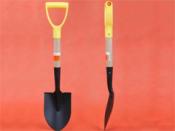Search
Login
Cabbage kale useful properties, cabbage kale (cabbage kale) what it is, growing cabbage kale, useful tips
If you analyze the change in the taste preferences of the inhabitants of the planet, it is easy to notice that some fairly important and useful products for the body periodically go out of fashion, after a considerable time, interest in them is growing rapidly.
Kale or kale cabbage is no exception, although it is quite difficult to find it on the shelves of domestic stores, but fans of lively cuisine and healthy eating, with their increased interest in this variety of cabbage, have already laid all the prerequisites for the rapid growth of its popularity.
For a short time, it has become an indispensable ingredient in many dishes that are cooked in trendy restaurants; housewives are happy to use cabbage cabbage when cooking homemade dinners.
Content:
- Kale cabbage - useful properties video
- Kale leaf cabbage, plant description video
- Kale Cabbage Varieties
- Kale Cabbage - Growing
- Useful Tips
Kale cabbage - useful properties
If judged not biased, then cabbage kale should hardly be attributed to products that are a panacea for all diseases. Nevertheless, it compares favorably with other vegetables by the presence of numerous beneficial minerals and vitamins in the composition.
Several varieties are in consumer demand, they differ not only in appearance, but also in composition, for example, those who want to stay alert and youth longer are recommended to include in the diet a variety with curly purple leaves that contains the most antioxidants.

In the composition of cabbage were revealed:
- vitamins of group A, and their amount in 100 g of product exceeds twice the daily requirement of the body
- representatives of group B (1, 2, 3, 5, 6, 9)
- ascorbic acid (C), its daily norm is exceeded by a third (132%),
- large reserves of manganese, nickel, magnesium, calcium and potassium, copper, selenium and phosphorus, zinc
You can not underestimate the nutritional value of the product, because in its composition there are all 9 amino acids that are so necessary for humans. Every 100 grams of cabbage contains about 9 grams of healthy carbohydrates and 4 grams of protein. In addition, the cale is rich in flavonoids, lutein, glucosinolates, zeakstantin, fats.

Calorie leaves 48 kcal in every 100 grams, which allows you to attribute the product to diet.
In addition, the use of kale cabbage allows you to:
- lower blood cholesterol
- strengthen immunity
- strengthen the muscles of the musculoskeletal system
- remove toxins and toxic substances from the body
- get rid of some eye diseases and improve the quality of vision
- prevent the development of cataracts and cancer
- improve skin condition
- strengthen teeth

It has been proven that it has antioxidant and anti-inflammatory properties, is able to neutralize the damage from free radicals and detoxify the body, slow down the aging process. It is useful for women to use kale cabbage during menstruation, to remove PMS.
But it should be borne in mind that the use of the product in large quantities can harm people suffering from kidney ailments or urolithiasis, due to the presence of a high percentage of oxalic acid in the composition. It is not recommended for use by those who have individual intolerance to the components present in its composition.
Kale leaf cabbage, plant description
Since we have already familiarized ourselves with the many usefulnesses of this type of cabbage, the question arises of what constitutes this plant, which is unique in composition. Cale is a representative of cruciferous, one of the types of cabbage, a feature of which is the inability to form a solid head of cabbage.

The leaves that are used as a food product are quite dense, curly, the color can vary from dark green to purple. The stem, due to its stiffness, is not used in raw form in food. Refueling is prepared from it or juice is squeezed out and added to green smoothies.
The leaves do not differ in particularly pleasant aroma, most likely they resemble the smell of ordinary white cabbage. The plant belongs to annuals, propagated by seeds.
Kale Cabbage Varieties
If we talk about varieties, it should be noted that all of them are divided into several types.
 .
.
The first, most common, include curly leaf plantsresembling parsley leaves:
- DWARF GREEN CURLED, tall, up to half a meter tall bush, does not require garter, has a bright cabbage flavor.
- FRIBOR, a short hybrid, bush height of up to 20 cm, usually grown in small beds, in conditions of deficiency of planting space.
- DARKIBOR is a taller hybrid.
- TALL GREEN CURLED (Scotch Curled), tall bushes, more than half a meter, used fresh used to freeze.
- WESTLAND AUTUMN grade dwarfish, frost-resistant.
- SPURT - an early ripening variety, has curly leaves, it differs in that you can immediately sow it in a permanent place.

Varieties with flat sheetare distinguished by a tendency to shoot formation, frost resistance, resistance to diseases and pests, a rougher leaf texture. It is customary to use not autumn leaves, but shoots growing after wintering. The most common representatives of this species are the tall variety COTTAGERS and THOUSAND-HEADED KALE.
Varieties with leaf leaf differ in that they are sown in a permanent place, in prepared beds. For the preparation of salads, young spring shoots are used. ASPARAGUS KALE is relatively rare, HUNGRY GAP is reliable, productive, shoots are used for freezing.
PENTLAND BRIG - different spear-like sheet, obtained by crossing the above plant species, has the advantages characteristic of these species. Specialists recommend using this variety for growing on their own site. Commodity maturation of the leaves occurs in late autumn, the leaves of young shoots of overwintered plants, as well as inflorescences, which appear a little later, are also used for food.
Kale Cabbage - Growing

Amateur vegetable growers are attracted by kale:
- ease of care
- the possibility of growing in different climatic zones, in open ground and greenhouses
- resistance to temperature extremes
soil preparation
The plant is not picky about the composition of the soil, but in order to get a high yield it is recommended to choose fertile, peat or medium clay compositions. You should not choose low or flooded plots for planting, if the whole area is excessively wet, you should resort to the construction of high beds. At the same time, boards should be selected from strong wood, not subject to rapid decay.
Since transplanting seedlings is somewhat problematic, kale cabbage seeds are best sown directly in the area where it will be grown. The platform can be sunny or half shaded.

Recommended seeding time is April or early May. The plant involves growing in a cold climate, it can withstand frosts of up to - 7 C, the upper temperature limit is +27 C.
Pay attention to the acidity level of the soil, it is recommended that it be in the range of 5.5 - 6.8 pH. If the pH is below normal - add acidic compost or a special mixture to it, if the acidity is too high - it is recommended to add granular sulfur at the norm.
The soil must be sufficiently nutritious.
sowing seeds
The depth of the holes is within 1.5 - 2.5 cm, they are placed at a distance of 45 cm, in rows, wood ash and feathery are introduced. 4 or 5 seeds are sown in each well. When marking the bed, one should not forget that the minimum area for growing one bush should not be less than 40 square meters. see. The same capacity tanks will be required when growing cabbage at home.
Next, the crops are watered, sprinkled with soil and covered with polyethylene or glass. Often they practice growing cabbage kale in greenhouses.
Shoots appear after 7-10 days. They should be viewed, weak sprouts - removed, it is no longer necessary to build a film shelter.
Choose the seeding time should be guided by the following rules:
- sowing seedlings is carried out one and a half months before the approximate date of the last freeze,
- when sowing in open-air garden beds, work begins a couple of weeks before the last predicted frost, during spring sowing and about two and a half months before frost - when sowing in autumn.
Seed germination will occur even at soil temperature +5 C, but the temperature is considered to be optimal + 21 C.
cabbage transplant cale, transplanting seedlings into the ground
Transplanting feces is recommended if the plants have reached 10 centimeters in height. Usually during this period of development they have 4 true leaves, and their age is 5-6 weeks.

Preparation of beds for planting seedlings will be:
- in the application of fertilizers, their quantity must comply with the recommendations for use. If home-made compost is introduced, then its layer, together with mulch, should not exceed 5 cm. If stone chips or algae powder are used, they are poured very thinly.
- if the seedlings were purchased in finished form, it should be carefully removed from the containers, if grown by hand - you will need to dig it in the pot on all sides, then remove it, trying to damage the roots as little as possible.
The pits rummage so deep that the soil when planting almost reaches the lower leaves. The distance between rows and bushes in a row should be about 0.4 - 0.6 m.
Bushes of cabbage are laid out in moistened pits, covered with soil, watered abundantly.
care features
Subsequent care will be as follows:
- watering as the soil dries, in hot, dry weather - maybe daily
- fertilizer of the bushes will have to be done throughout the entire growing season, every 6 weeks
- the soil on the bed should be covered with mulch, especially if the bottom sheets show the appearance of rot or they become discolored. A layer of mulch can be laid if the plants have reached 15 centimeters in height. Mulch will reduce the frequency of watering, as it will help maintain moisture. She will not allow the leaves to come into contact with moist soil, i.e. will prevent the possibility of developing putrefactive processes on the leaves.
All noticed yellowed and deteriorated sheets should be removed immediately, this will reduce the threat of attack on plants of harmful insects.
harvest

Harvest time begins 70-95 days after sowing the seeds, or at the confluence of 55-75 - from the time of planting seedlings in the ground. You can start collecting leaves earlier, after they reach a height of 20 cm. Of course, you should take into account the characteristics of the variety you grow.
If you remove individual sheets, but first of all you need to collect the external. If the harvest is massive, then cut the entire stem at a height of at least 5 cm from the ground. In this case, the plant will begin to actively build up a new green mass.
Too tighten with the harvesting period is not recommended: the leaves will become stiff and bitter aftertaste.

It is a real pleasure to see how the kale cabbage ready for harvest looks in the photo - a plant that amazes the imagination with its dimensions, original shapes and colors.
Useful Tips
Those who have already grown kale in their plots claim that it is much better stored than bought in a store, because more resistant to damage by fungi and microorganisms. Shelf life of cut leaves in the refrigerator is approximately three weeks.
Experienced chefs suggest freezing leaves. Preparation for freezing consists in thoroughly washing the leaves and drying.

You can cook cabbage in different ways:
- boil
- put out
- bake
- deep-fry
Depending on the variety, kale cabbage can have a more or less intense bitter taste. Bitter old varieties are recommended for salads or soups. For hybrid varieties, bitterness is not characteristic.

A variety of dishes are prepared from cabbage leaves, the stem, due to its stiffness, is used to make cocktails or smoothies.
Also, leaves can be processed into chips. To do this, the sheets are mixed with seasonings and pepper, sprinkled with olive oil, use an oven or dehydrator for baking, the readiness is determined by crisps.
As for useful tips on planting and caring for them, they can be formulated as follows.
Avoid on the beds of the neighborhood of beds of kale cabbage with rows of tomatoes or strawberries, strawberries, beans.
The need for frequency of irrigation should be determined by the degree of drying of the soil.

It is recommended to track the appearance of insect pests on the beds: gray cabbage aphids, scoops, cabbage, slugs and snails. If they are found, it is necessary to treat the plants with the appropriate chemical preparations or prepare the preparations for processing themselves, in accordance with folk recipes.
Experienced gardeners note that it is advisable to choose cool days for harvesting - the leaves will give less bitterness. The sheets collected on a hot day are more bitter.
To obtain subsequent harvests, the leaves should be carefully trimmed, the root and part of the stem should be preserved, new shoots will appear on them.
So, you decide to grow kale cabbage, the question is: where to buy seeds?

It’s not difficult to do it, they go to shops for gardeners, if you don’t find a variety you like, ask for help in online stores selling seeds, there you’ll certainly find everything your heart desires.
To get a good harvest, give preference to varieties recommended for the climatic conditions of the area of \u200b\u200byour residence.





